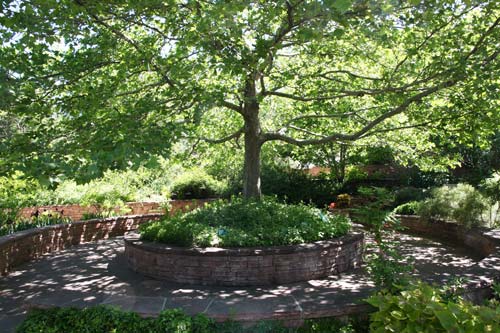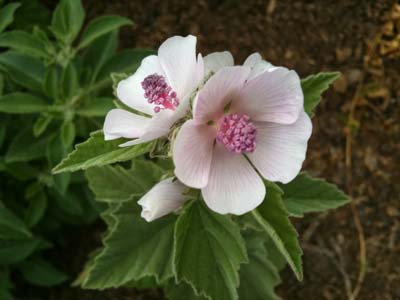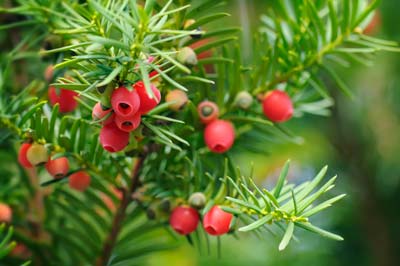Changes in the Medicinal Garden
Submitted Jan 30, 2018 at 03:00 PM
By: Angie Decker , Red Butte Garden Horticulturist
Exerpt from the 2018 Red Butte Garden Spring Newsletter article "The Changing Face of the Medicinal Garden"

London planetree in the center of the RBG Medicinal Garden, summer 2016

The root of the marshmallow plant has been used for centuries for its medicinal properties

An extract from the bark of English Yew is used in chemothearapy drugs
Exciting changes are underway in the Dr. Ezekiel and Edna Wattis Dumke Medicinal Garden. Nestled in the middle of Red Butte Garden’s three Terrace Gardens, between the Fragrance and Herb Gardens, this space is home to plants known or believed to have medicinal properties. The Medicinal Garden was originally built and planted in 1996 around a planetree (Platanus), under which, according to legend, Hippocrates taught his pupils the art of medicine on the Greek island of Kos.
At that time, the Medicinal Garden’s plant palette primarily consisted of woody shrubs and trees. Now, with over 21 years of growth, many of those plants have outgrown this space, are competing for resources and are shading out the understory. This limits plant diversity, blooming, and impacts plant health.
Several trees, shrubs, and perennials have been removed, thinned, or rejuvenated to improve the light conditions and create space for a wide variety of new medicinal plant species. Our Horticulture staff has been hard at work researching medicinal plants from all over the globe, selecting those that will survive in our climate, and that are particularly important in telling the story of the healing power of plants.
Plants have been used for their healing properties by cultures around the world for thousands of years, with many of them still remaining relevant today. For example: the root of the marshmallow plant (Althea officinalis) has been used throughout time in ancient Greek, Ayurvedic, Medieval, and Western medicine to treat coughs, wounds, burns, and insect bites. Plants used in modern medicine will have their place in this garden as well, such as the English Yew (Taxus bacatta). An extract from the bark of this tree is used in chemotherapy drugs to battle a variety of cancers. With new techniques, treatments, and therapies constantly being developed, we hope to also highlight plants used in cutting-edge research that may lead to future advancements in health care.
Another exciting change in the Medicinal Garden will be the signs and information you will see when you visit. The story of medicinal plants is so rich and diverse that it is impossible to tell it all at once. Instead, we will select a different theme each year and highlight the plants, cultures, and practices within each theme.
The new medicinal plant list will largely consist of perennials that will remain from year to year, allowing the Medicinal Garden to grow and return to a densely planted oasis after just a few seasons. Annuals and tender species will also be included in both planting beds and containers, and will vary each year depending on the story being told. Planting will begin this spring and continue throughout 2018 and likely into 2019, as some important and interesting medicinal plants are rare and it will take us time to acquire and propagate them. Visit the Medicinal Garden often to witness the changes as they unfold!






